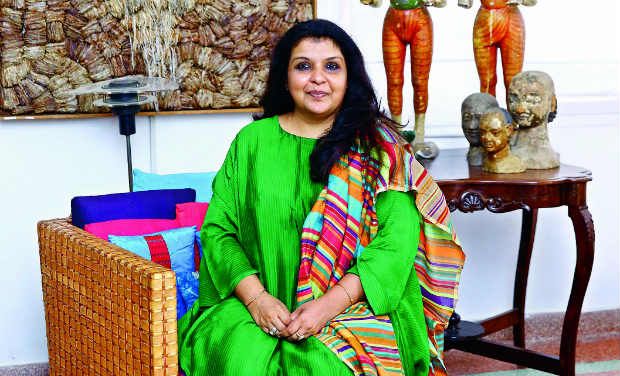
Destination experiences are the newest trend for the new-age traveller. It is not just about visiting tourist destinations, but also adding that touch of something special to the experience. Bespoke luxury experiences are the order of the day as more tourists are now choosing to discover the city through customised routes.
‘Captivating Chennai’ by the Taj Coromandel is one such experience, helping visitors see the many moods of our culturally inclined city — be it art or textiles. The Collector’s Eye’ (in association with Apparao Galleries) offers connoisseurs a chance to visit the homes of renowned art collectors in the city and look at art lovingly collected over a period of time. For those who love fashion (or ethnic clothes), Warp and Weft takes you to the atelier of French embroiderer, Jean Francoise Lesage, followed by a shopping trip to the market.
A motley crew of art lovers gathered at the Taj Coromandel for the Collector’s Eye tour recently. And one of the visits was to the art deco dwelling of gallerist Sharan Apparao. Her home was fringed with a garden dotted with sculptures. The modest entrance and the staircase area doubled as a forum to showcase Sharan’s love for art. We are greeted by a fibreglass sculpture of an Aravani, made by neo-realistic artist, George K.
A collection often speaks volumes about the collector. At Sharan’s house, every nook and corner is a reflection of her personality. Sharan confesses that she quite likes the pop-art-meets-political-satire approach of artist P. G. Dinesh. And this is evident from the countless pieces she has of such art. “I love pop culture and the vivid colours,” she explains.
The collection, which is a mélange of modern art and antiques, has some interesting pieces. For instance, there was a sculpture made from tea bags, done by French artist Janine Mongillat, depicting female genitalia.
“Sometimes I think in colours and sometimes I think in form,” says Sharan, as she shows us around her living space. She points out a canvas by Arpita Singh, which is her favourite. But she also likes to encourage younger artists. “I really like George K’s painting, Buddhist Man,” she adds.
On a side table, there is an enviable collection of nine Burmese baskets. Sharan says, “I love old things. And I work with new things.” On cue, we are taken to Prajwal Chaudhary’s digital art on countless matchboxes.
Each piece of art (or furniture) has a story behind it. And Sharan is an engaging storyteller. For instance, we admire the quirky centre table and this art collector relates its genesis. “The table is made from an old name board of a finance company going back to 1906. We cut off the legs for the table from a discarded kitchen cupboard and put it all together,” she laughs. As we bid adieu, we notice a mesh of fine steel. Sharan says, “Puneet Kaushik made this dupatta, which is crocheted with stainless steel.
It weighs a ton but I wore it the other day to an art show,” she says, in parting. Our next stop is Lily Vijayaraghavan’s quiet residence. The grande dame welcomes us as we pause to admire the beautiful garden, speckled with stone sculptures. “Stones feel claustrophobic inside the house,” says Lily, who is passionate about antiques.
Her collection is centred on the concept of Shringar (or beauty). We walk past cupboards, showcasing a massive collection of ivory combs, miniature perfume bottles and ornate foot scrubbers, adorned with swans and peacocks. Browsing through Lily’s collection was akin to going back to a time where life was much simpler.
Lily points out that most of her collection was sourced from south India. “I come from a family of collectors. It is in my blood,” she says, adding that there is a scarcity of good items to be found.
“There are a lot of fakes in the market,” she adds. The pieces of dancers in different mudras occupy a prominent place in the veranda. “I got those from a temple chariot,” explains Lily, showing us stucco figurines that are more than a thousand years old. The walls are dotted with Mysore and Tanjore paintings, depicting gods and goddesses in artistic finery.
Lily’s house is a living museum and the artifacts are a part of her space. “It is a full-time job,” she smiles, showing us the kitchen, with Chettinad-style utensils and urns with intricate figures and carvings, all carefully arranged.
Lily shows us the Chettinad spoon rack. “It is given to a bride during the wedding,” she explains. There is also a room, housing artifacts that are for sale. “We see all the people who bought art from us. They really cherish it,” she says.
source: http://www.deccanchronicle.com / Deccan Chronicle / Home> Lifestyle> Travel / DC / by Tuba Raqshan / October 15th, 2013